Kleiner’s Korner: The Overlapping Histories of Long Island Aviation and the Motor Parkway

The above map shows the major aerodromes (e.g., airfields) on Long Island in 1911 and their proximity to The Motor Parkway. It was produced for the Aero Club of America by the Automobile Blue Book Company and published in "Aircraft" magazine of November, 1911.
Aviation and automobiling experienced intertwining histories on Long Island in the early 1900s. The open areas surrounding the Motor Parkway were inviting to hobbyists, experimenters and commercial enterprises.
Art Kleiner
On the Grounds of The Motor Parkway

As early as the first year of the Parkway, grounds surrounding it were being offered to aviator clubs and other enthusiasts. (Aeronautics Nov., 1908)
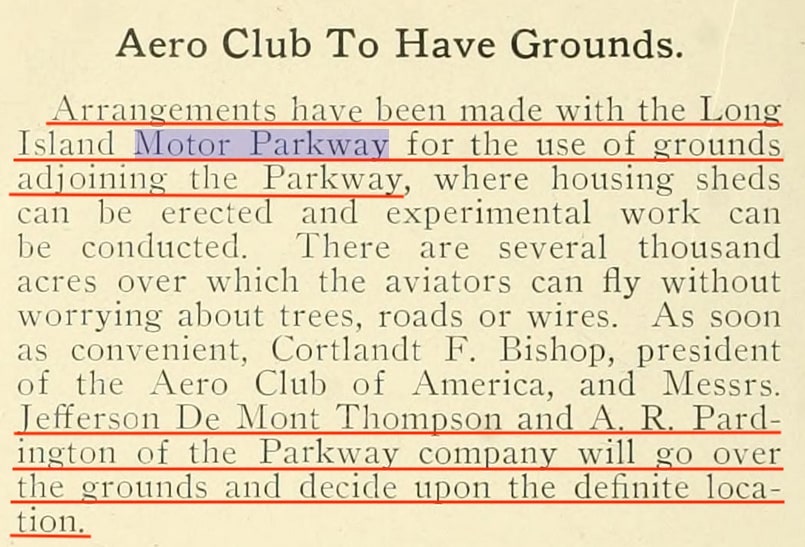
Parkway officials A.R. Pardington and Jefferson De Mont Thompson surveyed the areas and suggested suitable sites. (Aeronautics Mar., 1909)

Other locations were offered to The Aero Club of America but Long Island's Hempstead Plains was chosen for its aviation tests and races. (Automobiling Topics Sept. 18, 1908)
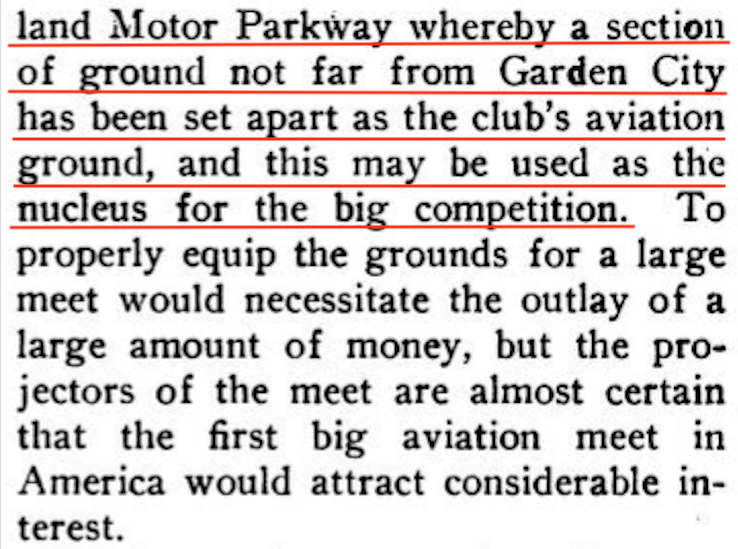
Near Garden City, the area would need to be improved necessitating a large outlay of money. (Automobiling Topics Sept. 18, 1908)
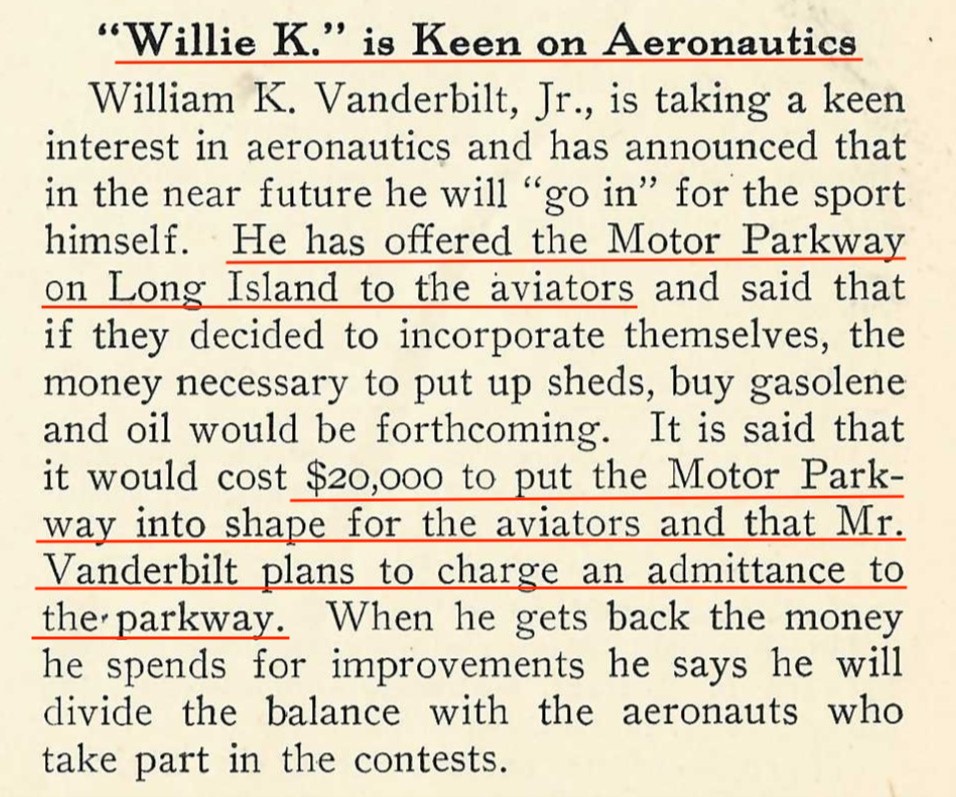
Willie K. offers his support and will charge an admission fee to the aviators for using the Parkway to cover his costs. (Automobile Topics June 25, 1910)
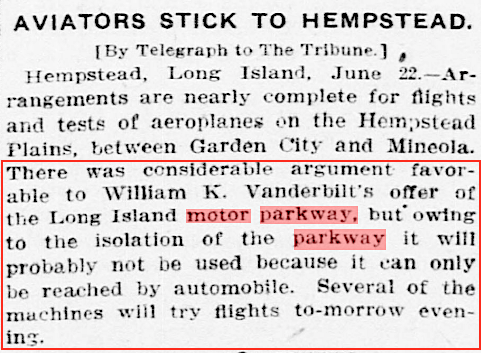
The offer, however didn't appear to be accepted. (New-York Tribune, Jun. 23, 1910)
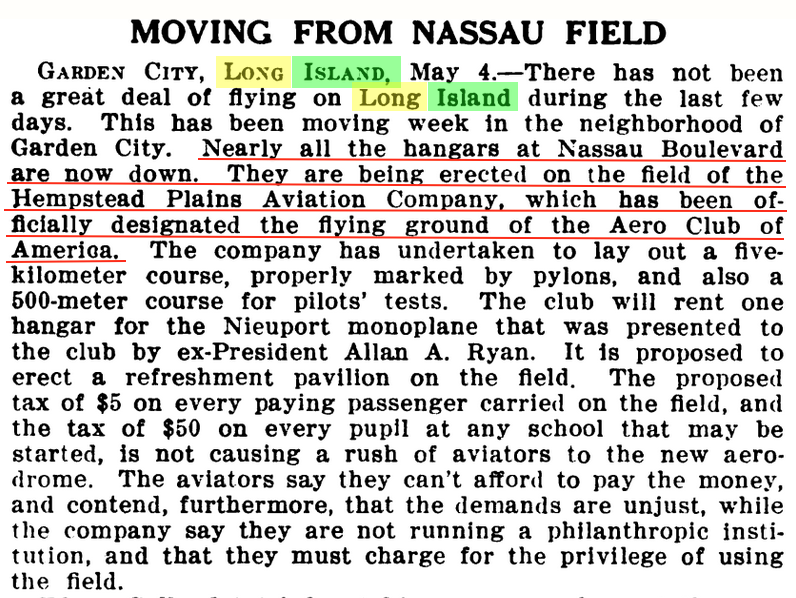
Eventually The Aero Club of America did move from the Nassau Boulevard flying field to the Hempstead Plains Aviation Company in 1912. (Aero and Hydro May 11, 1912)

Aero and Hydro Jul. 19, 1913
Aviation Racing Along The Motor Parkway
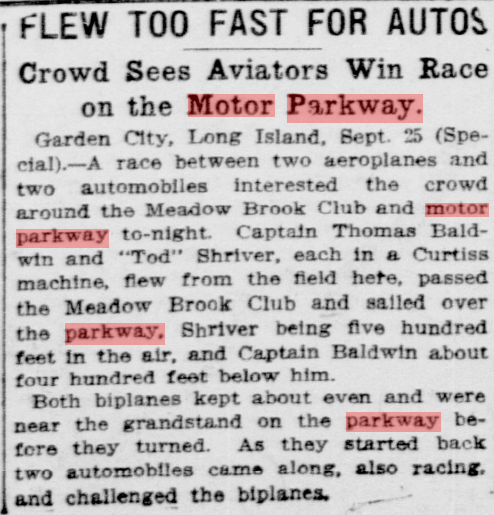
Impromptu races between aeroplanes and automobiles probably were a common occurrence. Near the grandstand in 1910, two autos made a challenge! (The New-York Tribune, Sept. 26, 1910)
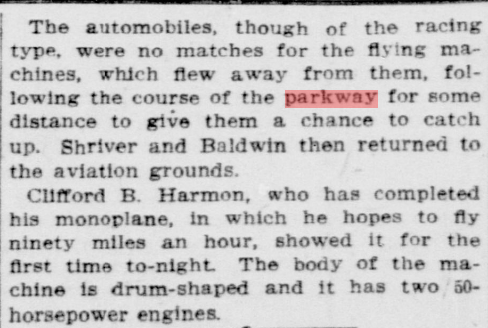
But the racers were "no match"! (The New-York Tribune, Sept. 26, 1910)
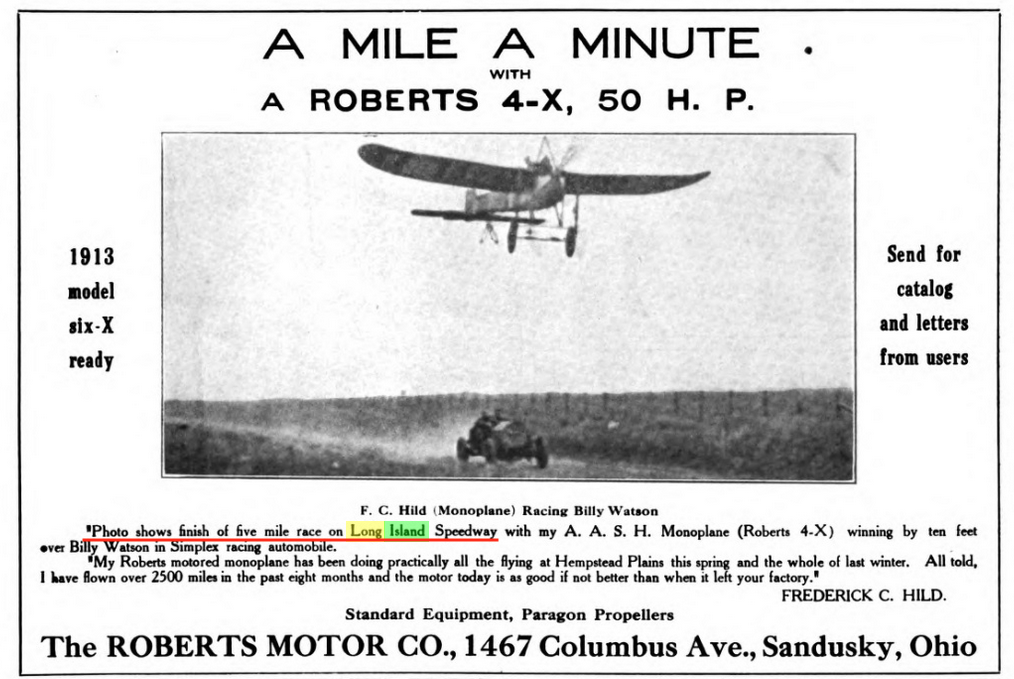
And in 1913, soon after acquiring his aviators license, Frederick C. Hild raced his A.A.S.H. Bleriot 50 H.P. monoplance against Billy Watson's Simplex automobile on the Long Island Speedway, presumably the Motor Parkway. (Fly Magazine June, 1913)
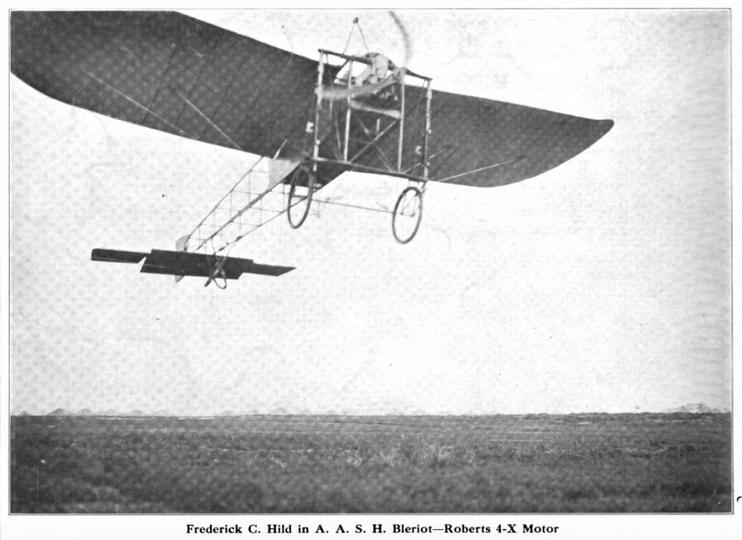
Fly Magazine March, 1913
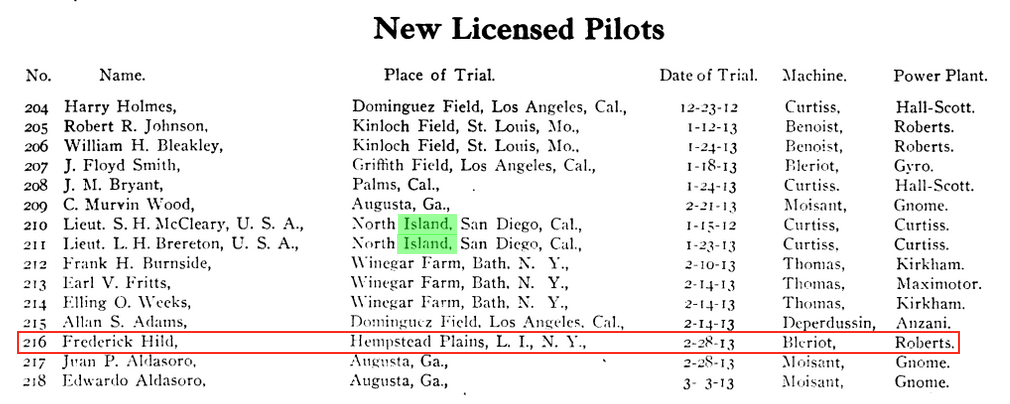
Fly Magazine April, 1913

Shortly thereafter, Hild had his license revoked for flying over the Meadow Brook Polo fields during a match. (Aero and Hydro Jun. 21, 1913)
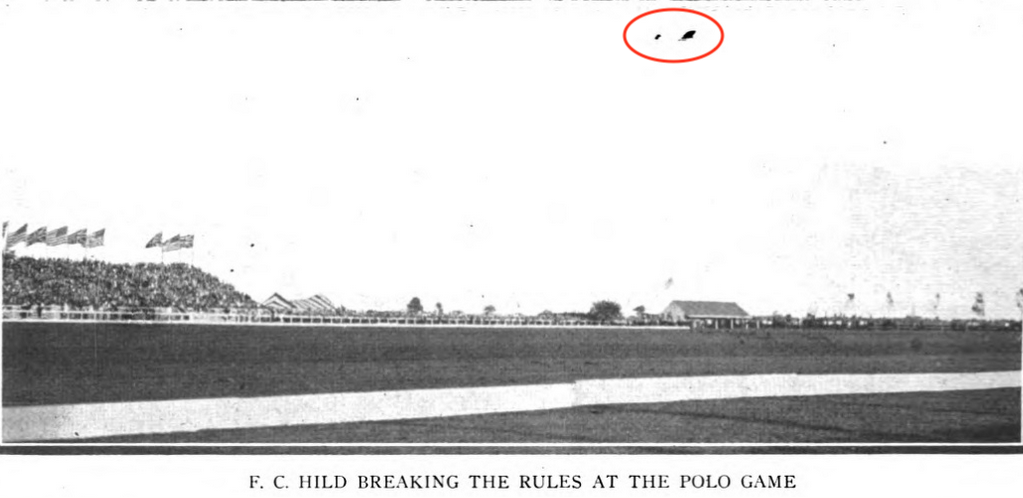
Aero and Hydro Jun. 21, 1913
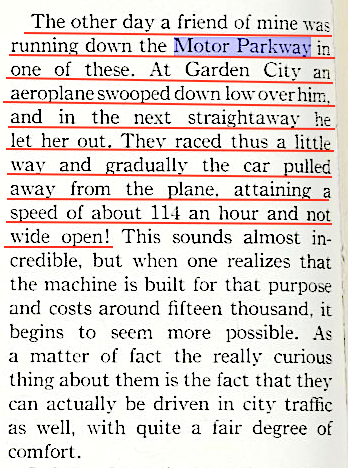
Another impromptu race was reported in "Country Life" magazine of February, 1928 between an aviator and an automobile. On which straightway do you believe the race took place?
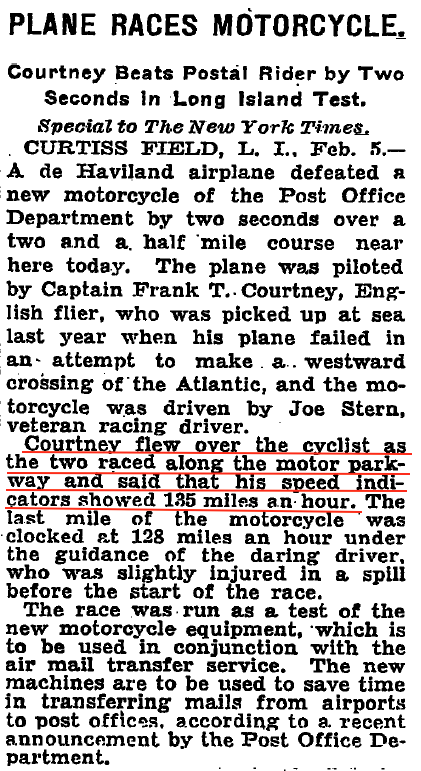
The following year a motorcycle raced an airplane (the latter winning by two seconds) along the Motor Parkway as part of a test to see if the new motorcycle model could save time in transferring mail from airports to post offices. (The New York Times Feb., 6, 1929).
En Route Over the Motor Parkway
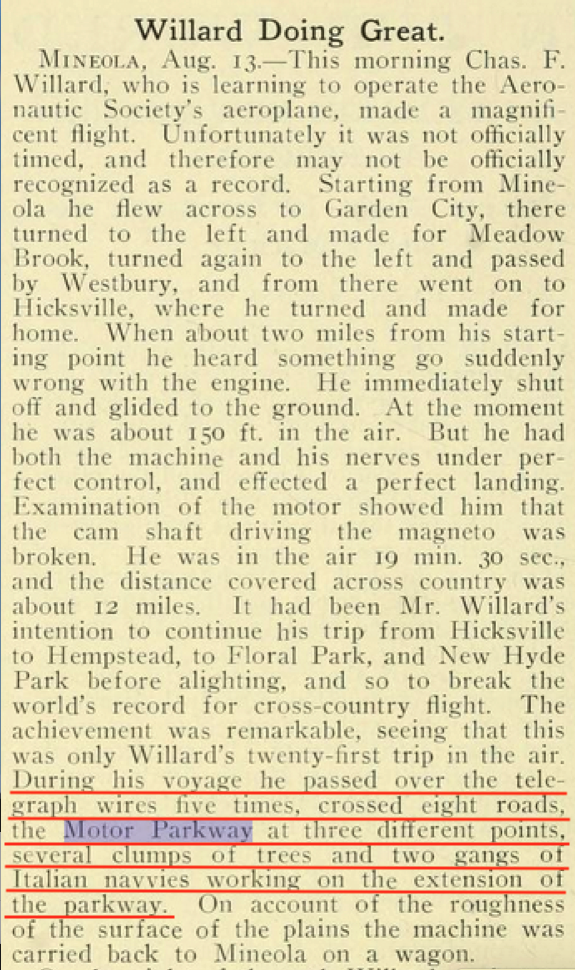
Aviators often flew over the Motor Parkway in speed trials as documented in these articles. Note in this 1909 article the pilot crossing over "two gangs of Italian navvies working on the extension of the parkway". Navvvies refers to the laborers who manually built railroads, canals, roads, etc. and is short for navigator or navigational engineer. (Aeronautics Sept., 1909)
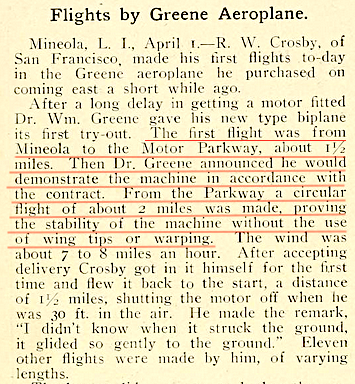
Aeronautics May, 1910
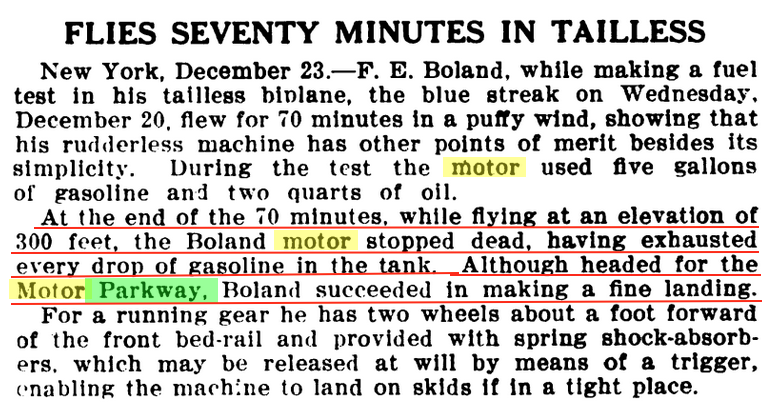
Aero Jan. 6, 1912
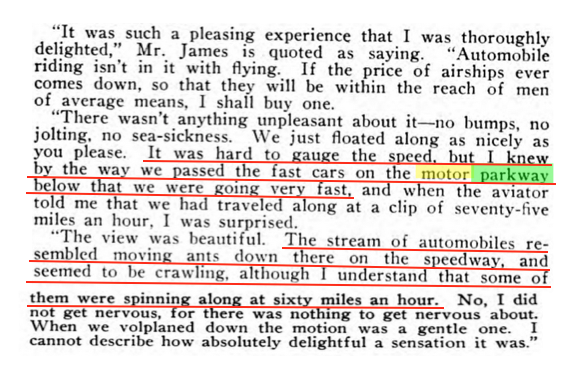
"The stream of automobiles resembled moving ants down there on the speedway, and seemed to be crawling . . ." (Aerial Age Nov. 1, 1915)
Roosevelt Field (all from 'Aero Digest", May, 1934)
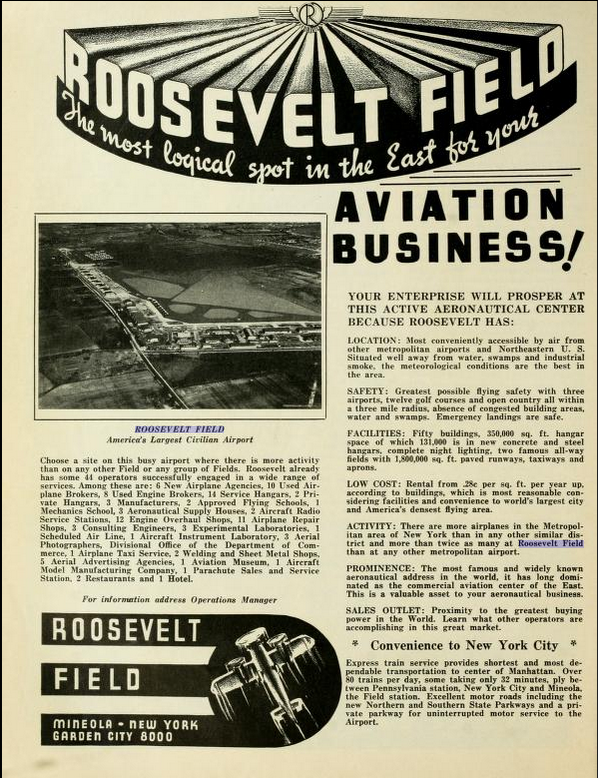
Roosevelt Field promoted itself in the 1930s as "the most logical spot in the East for your Aviation Business" and as America's largest civilian airport".
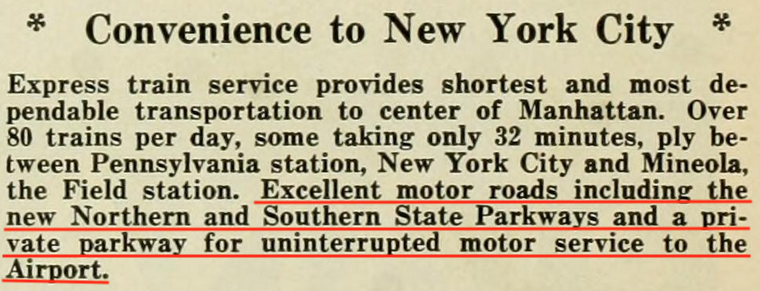
The many nearby roadways were noted as contributors to its convenience to New York City. The Motor Parkway here is referenced as a "private parkway" for "uninterrupted motor service to the Airport".
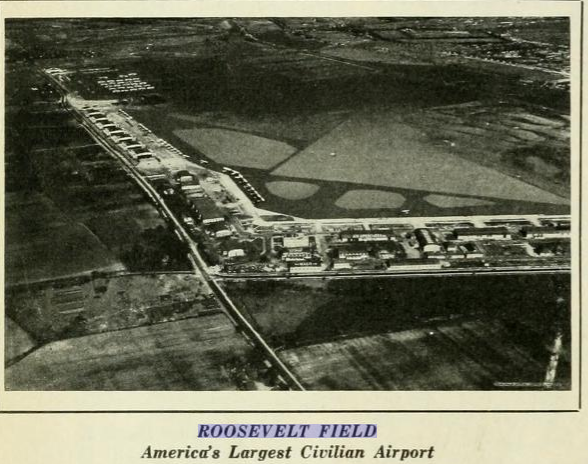

And as a Flying Bomb Test Site

While there are probably many other articles referencing aviation and the Motor Parkway, this last one documents the Motor Parkway's use during WWII. I wonder where the successful launch ended up! (Naval Aviation in WWII, 1969)
The Role of the Motor Parkway in the Development of the Cruise Missile
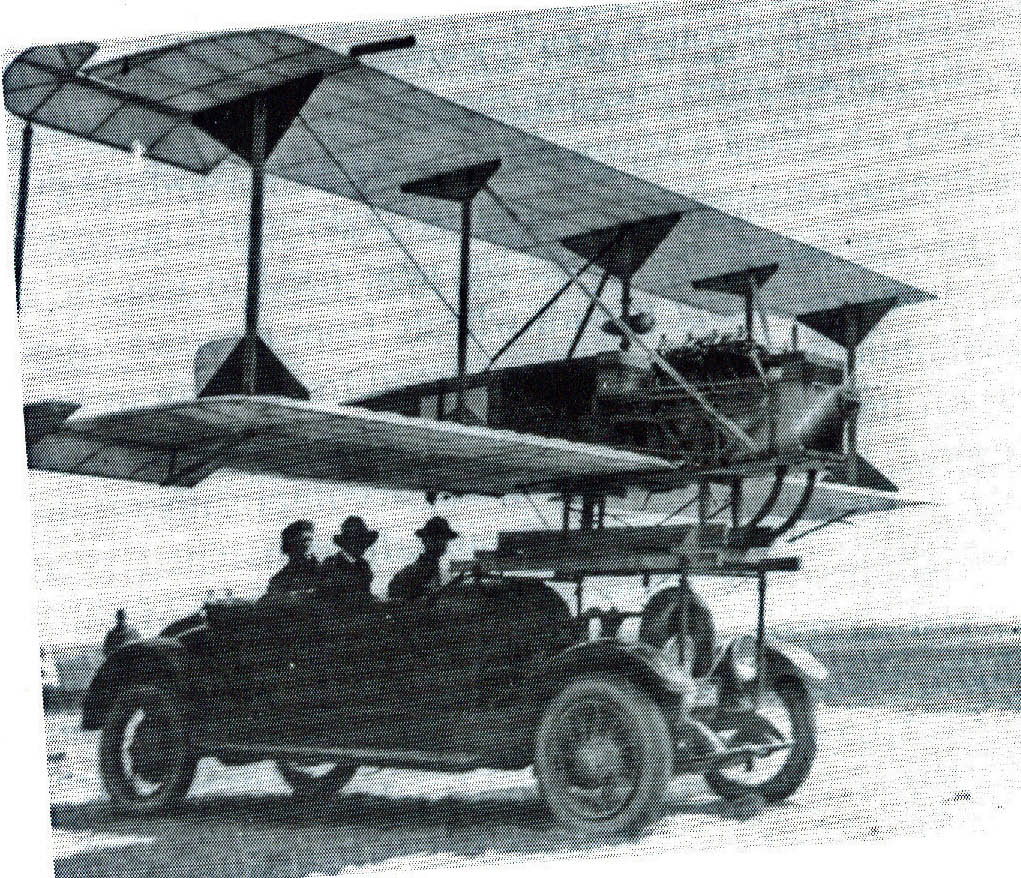
In 1917, Lawrence Sperry tested the first cruise missile on the Motor Parkway .
Future posts will reveal Willie K's interest in the aviation industry as well as by other Motor Parkway and Vanderbilt Cup officials.

Comments
A map showing the Motor Parkway that would eventually show “landing places for aeroplanes” prepared under supervision of Lawrence B. Sperry”. From “Aerial Age Weekly” of Jan. 1, 1917.
A pleasure to read through this, Art.
Thank you Brian for your support and contributions to the blog. Writing these articles gives me a much deeper appreciation for Long Island’s history. Hope others feel them beneficial, or at least interesting.
Hey, hey! Look at that list of new pilots! Lieuts. S. H. McCleary and L. H. Brereton, U.S.A.! They were Samuel H. McCleary and Lewis Hyde Brereton, two of the first 24 people chosen by the Aviation Section of the U.S. Signal Corp to be pilots. Some of the class are in the attached 04 Dec 912 pic. with Glenn Curtiss Sam, III
Art, Loved the detailed post about the overlapping history of Motor Parkway and aviation. Didn’t realize they were so entwined.